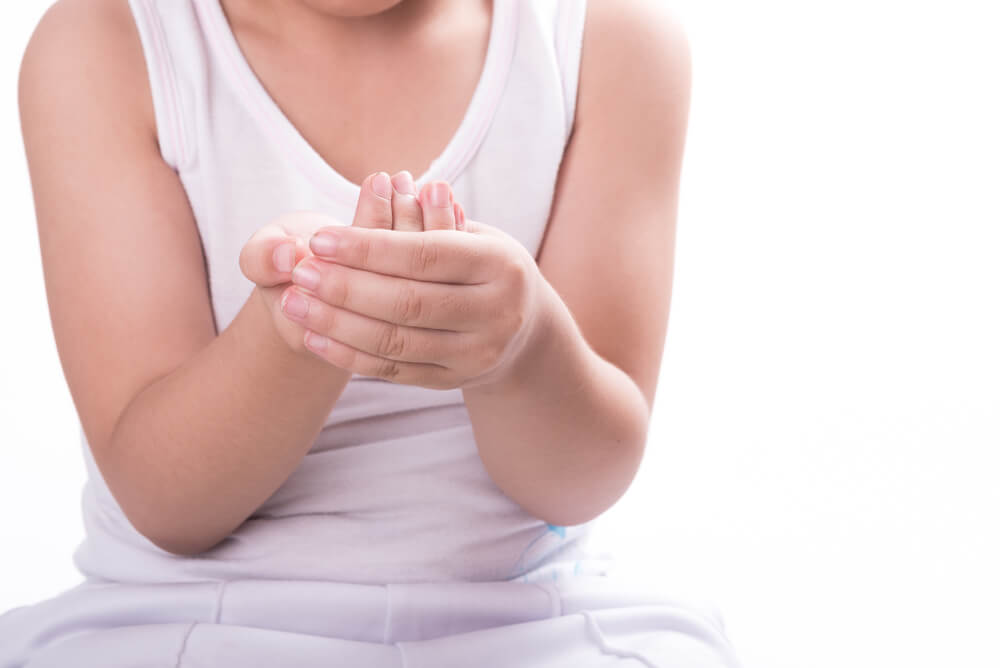As the summer heat settles in and the days grow longer, July brings with it a significant focus on raising awareness about a condition that affects many young lives: juvenile arthritis. It is a time to shed light on the challenges faced by children and adolescents living with this chronic autoimmune disorder. Juvenile Arthritis Awareness Month serves as a platform to educate the public, support those affected by the condition, and foster a sense of unity within the community.
In this article, our experts at the Pediatric Endocrine and Metabolic Center of Florida will explain what juvenile arthritis is, explore its symptoms and treatment options, and take a closer look at the significance of Juvenile Arthritis Awareness Month.
What Is Juvenile Arthritis?
Juvenile arthritis is not your typical “old person’s disease.” It refers to a group of autoimmune disorders that affect children and teenagers under the age of 18. Unlike arthritis commonly associated with aging, juvenile arthritis is not caused by wear and tear on the joints but rather by an overactive immune system attacking the body’s own tissues. This misguided immune response leads to joint inflammation, pain, stiffness, and swelling.

The Symptoms of Juvenile Arthritis
Recognizing the symptoms of juvenile arthritis is crucial for early detection and intervention. While the specific signs may vary among individuals, common symptoms include joint pain, swelling, stiffness, and tenderness. These symptoms may be worse in the morning or after periods of inactivity. Children with juvenile arthritis may also experience fatigue, a limited range of motion, and overall malaise. In some cases, the condition can affect other parts of the body, including the eyes, skin, or internal organs.
Juvenile Arthritis Treatment Options
Treating juvenile arthritis requires a multidisciplinary approach involving healthcare professionals, including pediatric rheumatologists, physical therapists, and occupational therapists, among others. The primary goals of treatment are to relieve pain, reduce inflammation, prevent joint damage, and help the child maintain a good quality of life.
Juvenile arthritis Treatment options may include medications, such as nonsteroidal anti-inflammatory drugs (NSAIDs), disease-modifying antirheumatic drugs (DMARDs), and biologic response modifiers. These medications help manage pain, control inflammation and slow down disease progression. Physical and occupational therapy can also play a crucial role in improving joint function, maintaining flexibility, and enhancing overall mobility. In severe cases, surgical intervention may be necessary to repair or replace damaged joints.
What Is Juvenile Arthritis Awareness Month?
Juvenile Arthritis Awareness Month, observed annually in July, is a dedicated period to raise public consciousness about juvenile arthritis and its impact on the lives of young individuals. It serves as an opportunity to increase understanding, reduce stigma, and advocate for better support and resources for those affected by the condition.
History of Juvenile Arthritis Awareness Month
The origins of Juvenile Arthritis Awareness Month can be traced back to a time when awareness and understanding about juvenile arthritis were lacking. It was a grassroots movement initiated by parents, families, and advocates who recognized the need for greater visibility and support for children with arthritis. Over the years, their efforts paved the way for the establishment of a dedicated month to shed light on this often misunderstood condition.
The Timeline of Juvenile Arthritis Awareness Month
Since its inception, Juvenile Arthritis Awareness Month has gained significant momentum and recognition. It has become a platform for various organizations, foundations, and communities to come together and make a difference. Let’s take a closer look at the timeline of this important awareness month:
- Early Advocacy (Pre-2000s): Parents and advocacy groups raise awareness locally and regionally, striving to bring attention to the unique challenges faced by children with arthritis.
- Official Recognition (2006): The Arthritis Foundation, a prominent organization dedicated to arthritis research and support, officially designates July as Juvenile Arthritis Awareness Month.
- Growing Momentum (2007-2010): The awareness month gained traction with increased participation from various organizations and communities across the United States.
- Social Media Engagement (2010-2015): Social media platforms provide a powerful tool for spreading awareness, connecting individuals, and sharing personal stories. Hashtags such as #JuvenileArthritis and #KidsGetArthritisToo gain popularity during this period.
- Community Events and Fundraising (2015-present): Juvenile Arthritis Awareness Month becomes a time for organizing community events, walks, runs, and fundraising campaigns to support research, advocacy, and programs benefiting children and families affected by juvenile arthritis.
How to Observe Juvenile Arthritis Awareness Month
Observing Juvenile Arthritis Awareness Month is a meaningful way to contribute to the cause and show support for children and teenagers living with the condition. Here are some suggestions on how you can get involved:
- Educate Yourself: Take the time to learn more about juvenile arthritis, its symptoms, and its impact on young lives. The more knowledge you gain, the better equipped you’ll be to support those affected.
- Share Information: Utilize your social media platforms, blogs, or other online channels to raise awareness about juvenile arthritis. Share informative articles, personal stories, or resources that can help others understand the condition better.
- Volunteer: Reach out to local organizations, hospitals, or clinics that support children with arthritis and offer your time and skills. Whether it’s helping organize an event, providing assistance with administrative tasks, or simply offering a listening ear, your support can make a difference.
- Support Fundraising Efforts: Many organizations and foundations dedicated to juvenile arthritis rely on donations to fund research, programs, and support services. Consider making a contribution or participating in fundraising events to show your support.
- Be an Advocate: Speak up for children and teenagers with arthritis. Raise awareness within your community, engage with policymakers, and support initiatives that aim to improve access to quality care and resources for those affected by the condition.

To Conclude
Juvenile Arthritis Awareness Month in July provides an opportunity to come together as a community, increase understanding, and support children and teenagers living with this chronic autoimmune disorder. By spreading awareness, educating ourselves and others, and actively participating in initiatives, we can make a difference in the lives of those affected by juvenile arthritis. Let us stand in solidarity with these young warriors and work towards a future where they can thrive and overcome the challenges they face.
Caring for patients with metabolic disorders can be a complex and challenging journey for families. We understand the difficulties and frustrations that may arise. That’s why we are committed to developing educational programs specifically designed for your child and your entire family. Our aim is to empower you with the knowledge and skills necessary to effectively manage your child’s condition. Through these programs, you will learn how to monitor your health, maintain a suitable diet, recognize when to seek assistance, and confidently handle any illness or emergency situations that may arise. At PEMC, our goal is to provide you with the support and tools you need to navigate this journey with confidence and peace of mind.


